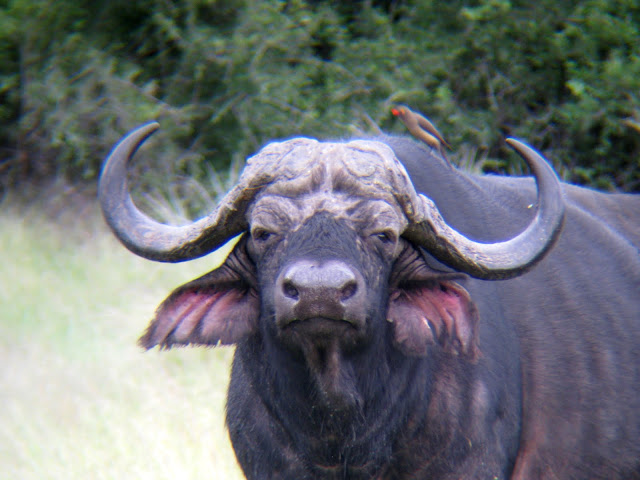 Another African submission to World Nomads’ Responsible Travel Blog. The topic this week surrounds eco-initiatives at safari bush camps. If you’re interested, read on here, or below:
Another African submission to World Nomads’ Responsible Travel Blog. The topic this week surrounds eco-initiatives at safari bush camps. If you’re interested, read on here, or below:
Eco-Successes in the African Bush
Running a safari camp can’t be easy. In fact, it may be just about the most difficult hospitality gig on the planet. In addition to all of the nuances of running any old high-quality hotel, you have to do it off-the-grid, in a very remote and hard-to-access location, within a wildlife reserve or park, with highly specialized on-site staff, while running a successful game-drive business that ensures guests see all of the Big 5 animals and more.

Big 5 sighting - Cape Buffalo
Balancing a sustainable tourism plan in this already difficult operating environment can be a tall order for any camp owner. Some argue that there simply is not enough time (or money) to implement sustainability projects under such demanding circumstances. Fortunately, many others have taken the opposite approach, believing that operating responsibly is a necessity for survival in the safari business. After all, visits to the bush are all about viewing animals in their natural environment – shouldn’t a safari camp’s goal be to protect that very environment?
Thanks to the many challenges of running a safari operation, camp owners have been forced to develop some of the leading eco-innovation and efficiency techniques found in the tourism industry today. Here are some projects that impressed me in the bush:
· Energy – Remote bush camps have two options when it comes to electricity – diesel generators or renewables. Both systems are used to power battery units to provide power during off-peak times. While most camps have historically used diesel fuel, those that have switched to renewables are reaping the benefits – reduced energy costs over time, no expensive diesel delivery costs, no noise pollution in the bush, no fuel-burning pollution in the bush, etc. Solar is the new diesel, both through solar electricity and solar thermal devices. Cutting edge camps have cut their operational diesel burn to nearly zero, using the old generators only for back-up during maintenance.
· Solid Waste – With no routine trash pick-up (some camps only have vehicle access for less than 3 months a year!), storing waste and recycling can prove to be a challenge. Add to that the hungry and aggressive animals in these regions, and you have a waste management problem on your hands. Composting has become a big trend, eliminating over 50% of solid waste volume. Compost pits, however, must be heavily secured and closely monitored – hyenas in particular love to dig their way in. Recycling is separated at some of the more eco-focused camps, but most parts of Africa lack a location for processing these materials. Material re-use is woven into every aspect of operations, from food-prep, to housekeeping, to camp decoration. Leading camps have developed systems for eliminating packaging and excess materials prior to camp delivery, reducing the load on the back end. Remaining waste is stored in secure cages until it can be transported back to town.
· Water Waste – Water is a precious commodity in the often arid desert environments. Watersheds are very susceptible to disease and pollution, so it is imperative that camp water is properly treated before being released back into the ground. Old-school septic tanks are rapidly being replaced with cutting-edge bio-digester units that use natural bacteria instead of harsh chemicals to treat waste water.

Waste water treatment facility in the bush
Any single initiative listed here wouldn’t constitute a news-worthy sustainability effort. However, when these projects are combined in a single property, and these properties are dotted across much of the African bush, we’ve got some pretty impressive and wide-spread eco-innovation. To me, there’s something darn cool about a lodge that sources, uses, and disposes of all of its own energy, water, and most of its waste in a responsible manner. Regardless of whether the motivation is out of operational necessity or environmental consciousness, I call these off-the-grid camps an eco-success.
